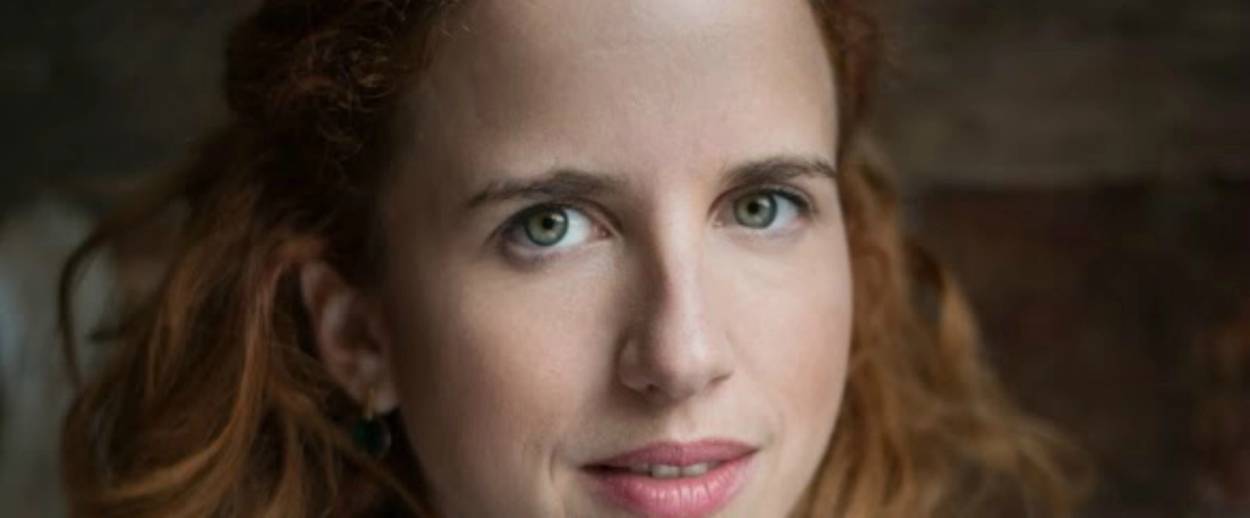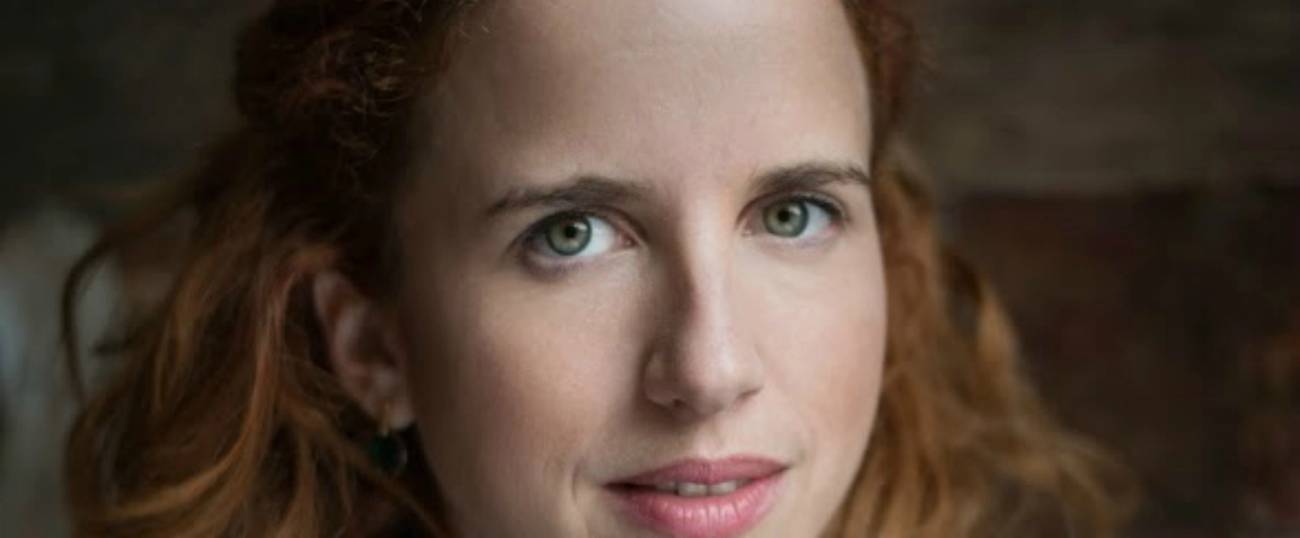Welcoming Zionist Ideas Into the Sukkah, Day 5: Occupy Zionism
Today, for our ongoing series of influential Zionist texts, a double billing from modern Israel: Stav Shaffir’s political activism and Yedidia Stern’s balance of competing identities




In the tension between the ephemeral and the eternal. We build flimsy huts through which we can see the stars, to symbolize how transient life can be. Yet, typically, we Jews have turned this lesson in evanescence into a lasting tradition. This paradox is a central Zionist tension, which the founder of modern Zionism Theodor Herzl, captured in his novel Altneuland (Old-New Land), spurring homeless Jews to erect a modern state on our ancient homeland.
For every day of Sukkot, we will provide a text from Gil Troy’s newest book, an update of Arthur Hertzberg’s classic Zionist anthology, The Zionist Idea. Troy titled his update, The Zionist Ideas, to open the conversation, from right to left, religious to secular, traditional to modern. He organizes the book into three defining periods: Pioneers until 1948, Builders from 1948 until 1998, and Torchbearers–modern Zionists. In each time period, he identifies six schools of thought–whose ideas echo in all these essays: Political Zionism, Labor Zionism, Revisionist Zionism, Religious Zionism, Cultural Zionism, and Diaspora Zionism. Since April, thousands of people have participated in Zionist Salons, reading these texts, developing their Zionist Ideas.
Occupy Zionism — Stav Shaffir (b. 1985)
Perhaps the most dramatic attempt by younger Israelis to revive a sense of Zionist mission occurred in tandem with the social protests and tent cities of the summer of 2011. A 25-year-old video editor, Daphni Leef, received notice from her landlord that she had to move because her apartment was being renovated. Frustrated, she began a Facebook protest against Israel’s high rents and high cost of living. Soon, hundreds had massed on Tel Aviv’s Rothschild Boulevard to live in tents, wave placards, and demand government assistance for middle-class Israelis—not just the poor. Reflecting Israel’s increasingly global perspective, the protesters modeled their grassroots campaign on the Arab Spring protests that tried democratizing Arab lands and America’s anti-capitalist Occupy Wall Street movement, which also featured tent cities in town squares. Hundreds of thousands more joined the protest as it broadened from the actual cost of rent and cottage cheese to the social and ideological price of rampant capitalism. The 2011 movement peaked on Sept. 3 with half a million Israelis rallying in Tel Aviv.
The protesters invoked Zionist symbols. Pictures and impersonators of Herzl and Ben-Gurion abounded, as did Herzl’s phrase, “If you will it, it is no dream” and Ben-Gurion’s supposed pronouncement, “I declare an egalitarian state.” Addressing the crowd, Leef drew on one of the most powerful Zionist symbols, “Hatikvah,” calling the summer of 2011 “the big summer of the new Israeli hope.”
Some polls estimated that 87 percent of Israelis supported what many simply called “The Social Protest.” And while it did not launch a movement and the government’s reforms were limited, it did spawn a renewed progressive call for economic equality and social dignity rooted in Labor Zionism.
The protests also brought new leaders to power. Although Leef started the outcry, other protesters—like Stav Shaffir—ended up in the Knesset. A young journalist who became the movement’s public-relations whiz, Shaffir had one “grandmother who escaped from Iraq” and a “grandfather who escaped during the Holocaust.” Recruited by the Labor Party, she was elected to the Knesset in 2013, becoming at age 28 the youngest female Knesset member ever. She remains a member as of this writing.
Insisting that “the Zionist dream will not be accomplished until Israel is equal as well as secure,” Shaffir fights settlement subsidies for moral, political, and fiscal reasons. She believes “Zionism has been kidnapped by voices that are not ours.” That, she explains, “is why I often use the terms ‘occupy Zionism’ or ‘reclaim Zionism’—to say we still have to fight for security, democracy, and defined borders.”
In her Knesset debut, Shaffir acknowledged her role as “the voice of this generation” and vowed to “act on behalf of the Zionism of this state’s founders.” Here, from a 3-minute Knesset exchange that went viral, she confronts right-wingers to offer her own Zionist hopes. Reading Shaffir illustrates Zionism’s deep liberal roots and the stunning range of Zionist thought–then and now.
Stav Shaffir’s Knesset Speech in January 2015
Don’t preach to us about Zionism, because real Zionism means dividing the budget equally among all the citizens. Real Zionism is taking care of the weak. Real Zionism is solidarity, not only in battle but in everyday life, day to day, to watch out for each other. That is Israeliness. That is Zionism.
To be concerned about the future of the citizens of Israel. In the hospitals, in the schools, on the roads, on welfare. That is Zionism.
And you’re taking it, and destroying it. You’re taking it and turning the public purse into a license for your own political machinations, instead of worrying about the country.
You forgot about the Negev and the Galil to transfer 1.2 billion-shekel bonuses to the settlements. You forgot Israel. You lost Zionism a long time ago.
Friends, when we sing “Hatikva,” we sing it in the fullest sense of the word, “Hope”: a politics of hope, a politics that has a future, a politics that is forward-looking, that wants to make life here better, more secure, that wants to make peace, that wants to improve relations between the different sectors within Israeli society, that believes in equal rights, in budgetary equity, that thinks that every single Israel citizen deserves an equal portion, and deserves to live a truly good life here. That is the true Zionism. That’s Hatikva.
If Prime Minister Benjamin Netanyahu had written our national anthem, it would have been called “the hymn of despair” not hope. Against your politics, we fight. Against the slander and against the lies. And for a politics of hope.
We All Balance Competing Identities — Yedidia Z. Stern (b. 1955)
“A member of a minority group within the religious minority group whose members internalize simultaneously and without reservation both the Jewish world of values in its Orthodox religious version, and the humanistic liberal world of values.”
While balancing loyalties to Judaism and the state, the religious Zionist also balances modernity with tradition. Yedidia Stern, for one, happily juggles what he calls Israel’s cultural duality rooted in Jewish tradition and Western ideas. He identifies himself as “a member of a minority group within the religious minority group whose members internalize simultaneously and without reservation both the Jewish world of values in its Orthodox religious version, and the humanistic liberal world of values.” He agrees with Rabbi Benjamin Lau that the Religious Zionist mission entails taking responsibility for the complexities arising from Western values and the challenges facing Israel’s minorities.
Born in England, now a full professor at Bar-Ilan University Law School and the vice president of research at the Israel Democracy Institute, Stern has spearheaded efforts to draft a constitution for Israel. Although some religious Jews consider the Torah Israel’s constitution, Stern and others seek to protect the government’s defining arrangements and citizens’ fundamental rights from legislative whimsy. Stern, along with Rabbi Benjamin Lau and others, fights to separate Judaism from rabbinic coercion so that Israeli Judaism can flourish naturally, organically, popularly.
Even those who are not religious can find inspiration in the breadth of Stern’s Zionist vision – and a model for how to understand one’s own identity, synthesizing defining commitments with eternal values. And in an age of polarization, the very messiness, the many contradictions within Stern’s worldview, is itself refreshing–and a blessing.
Ani Ma’amin, I Believe (2005)
The Jewish sovereign existence, an exceptionally rare commodity in history, is the fundamental experience of my life. For me, the Jewish state is not just a socio-political framework which allows for the national group to organize conveniently—in terms of security, society, economics, or otherwise—but it is a prime component of identity, an important manifestation of my Judaism, of my existence, of who I am. …
[My] personal compass [consists of] four circles of identities which I share (and their respective values which I continually try to balance).
The first: As a citizen of the State of Israel I am very much aware of the unique character the only Jewish state in 2,000 years should have. Israel is simultaneously a link in the chain of Jewish existence, which ties it to its heritage in a diachronic axis, and a link in the chain of democratic existence, which ties it to its own period in a synchronic axis. It is dissimilar to the other links in each of the two chains: It is the sole appearance of a dominant democratic culture in the annals of the Jewish nation, while also being the only appearance of a dominant Jewish culture in the midst of the democratic nations. …
The second: being a member of the Jewish majority in Israel, I bear the responsibility for reining in the force of the majority in order to prevent it from aggressively promoting its particular interests while systematically harming “the stranger who dwells among us”: the Israeli Arabs—as individuals and as a minority group. … The necessary balance requires recognition of the uniqueness of the Arab Israeli national community, without permitting it to exist as autonomy (politically, geographically, or otherwise).
The third: Being a member of the religious minority group which sees in Judaism not just a nation and culture but also a religion, I perceive it to be my duty to create a normative framework which will not foment continuous friction between state and religion. …
The great prominence of the struggle surrounding religious legislation has blurred the cultural value of the religious experience in all its nuances, a rich tapestry from which and within which it would have been possible to weave a Jewish Israeliness.
The struggle has not helped fortify the ramparts of Jewish law in the state, and, unfortunately, has contributed to transforming Jewish law, our national historic law, into a failed name brand in the Jewish state. Coercion of religious norms strengthens secular movements which are liable to be seduced to use the force of the majority in order to dictate arrangements which do not consider the unique needs of the religious minority. …
The fourth: I am a member of a minority group within the religious minority group whose members internalize simultaneously and without reservation both the Jewish world of values in its Orthodox religious version and the humanistic liberal world of values. This dual obligation is not free of symbolic, principled, and practical difficulties. Yet, nonetheless, members of this group are always inescapably subject to two masters: the Sovereign of the World and the state sovereign; the King of Kings and the earthly kingdom. Two systems of law rule over their lives a priori and unconditionally: Jewish law and Israeli law. These two spheres of loyalties—like a pair of parents—guide them in existing in a cultural and normative duality. The central challenge for the members of this group is to create a harmonious and integrative existence bridging both worlds, and this is a task which few, far too few, in Jewish society in Israel confront seriously and with the necessary firmness. …
Professor Gil Troy, a Senior Fellow in Zionist Thought at the JPPI, the global think tank of the Jewish people, is an American presidential historian, and, most recently, the editor of the three-volume set Theodor Herzl: Zionist Writings, the inaugural publication of The Library of the Jewish People.